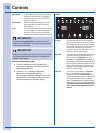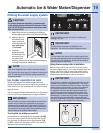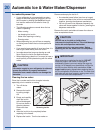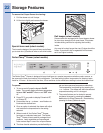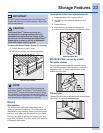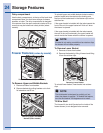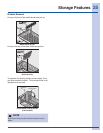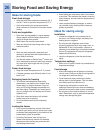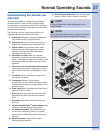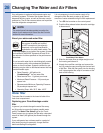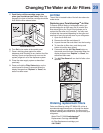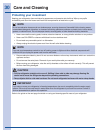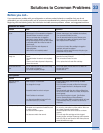
26
Ideas for storing foods
Fresh food storage
which reduces air circulation and causes uneven
cooling.
Fruits and vegetables
where trapped moisture helps preserve food
quality for longer time periods.
moisture content.
Meat
securely to prevent leaks and contamination of
other foods or surfaces.
TM
drawer and
set to meat/poultry setting for short-term storage.
should be frozen.
Frozen food storage
least ²⁄₃ full.
Packaging foods for freezing
deterioration, use aluminum foil, freezer wrap,
freezer bags, or airtight containers. Force as
much air out of the packages as possible and
seal them tightly. Trapped air can cause food to
dry out, change color, and develop an off-flavor
(freezer burn).
freezer wrap prior to freezing.
thawed.
Loading the freezer
so that on your return you can ensure your newly
purchased food designated for the freezer will be
preserved as quickly as possible.
freezer more efficiently maintain the selected
temperature after placing new purchases with
pre-existing frozen foods.
Storing Food and Saving Energy
at one time. This overloads the freezer, slows the
rate of freezing, and can raise the temperature of
frozen foods.
can circulate freely, allowing food to freeze as
quickly as possible.
Ideas for saving energy
Installation
the room, out of direct sunlight, and away from
heating ducts or registers.
producing appliances such as a range, oven, or
dishwasher. If this is not possible, a section of
cabinetry or an added layer of insulation between
the two (2) appliances will help the refrigerator
operate more efficiently.
tightly.
Temperature settings
temperature settings.
Food storage
cold air vents. Doing so causes the refrigerator to
run longer and use more energy.
placing them in the refrigerator. This cuts down
on moisture build-up inside the unit.
openings. Remove as many items as needed at
one time and close the door as soon as possible.
shelf. Remember, such an extreme temperature
change may damage the glass.



